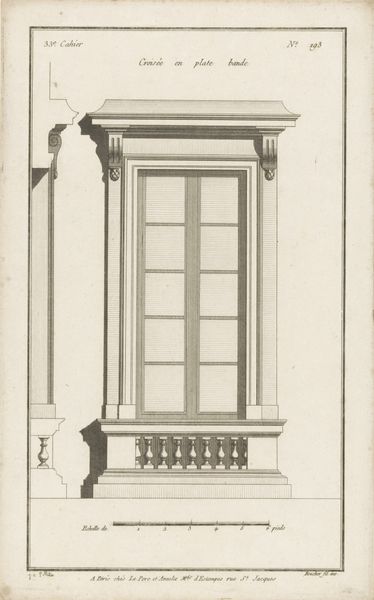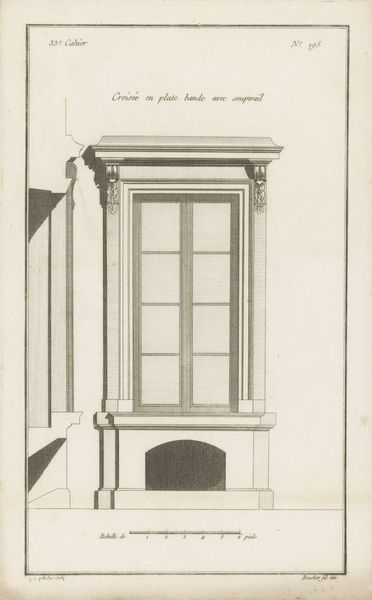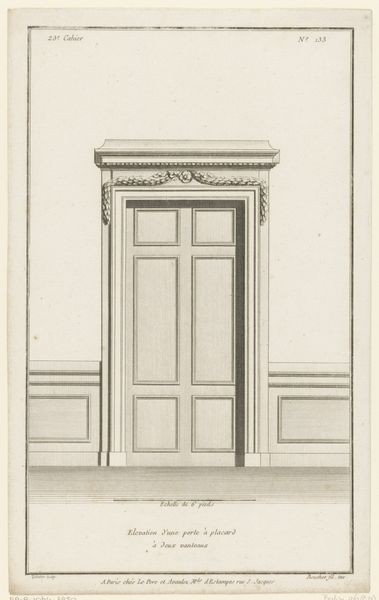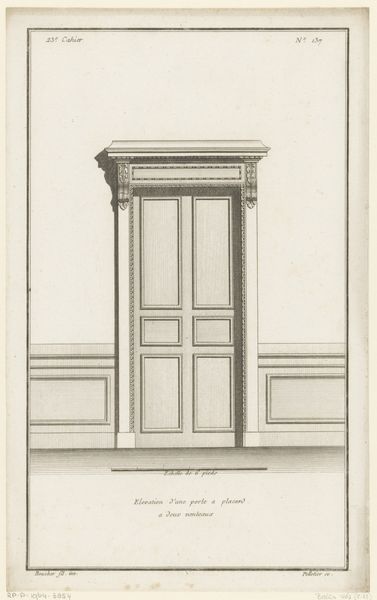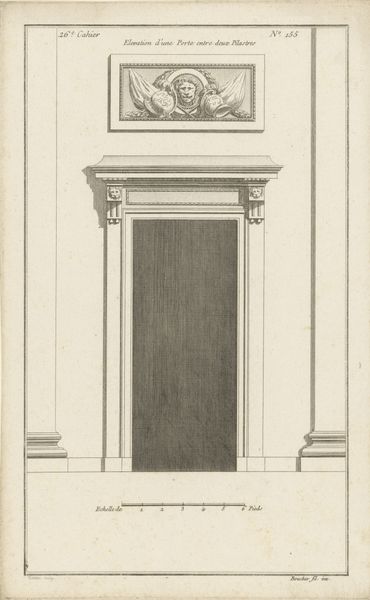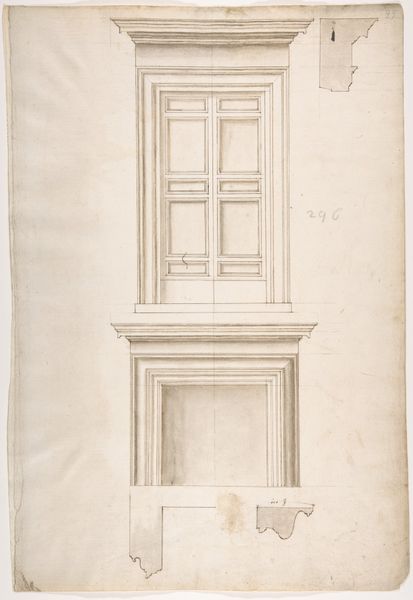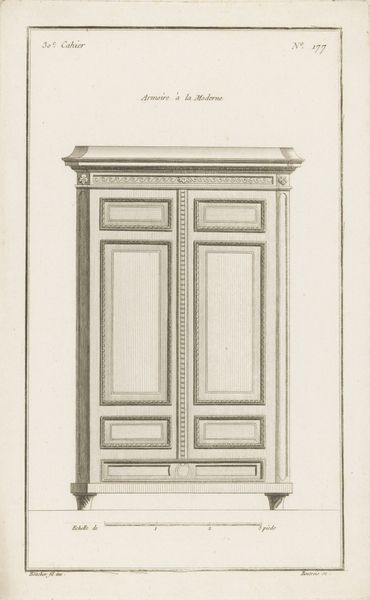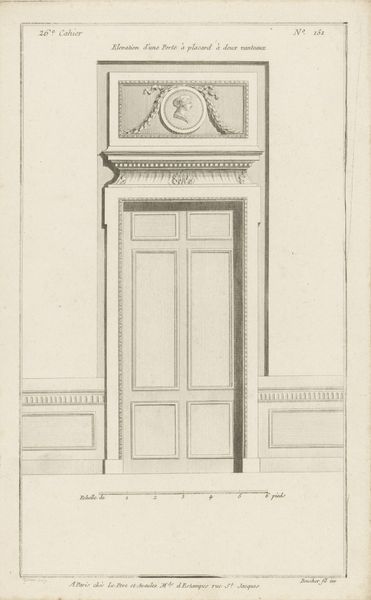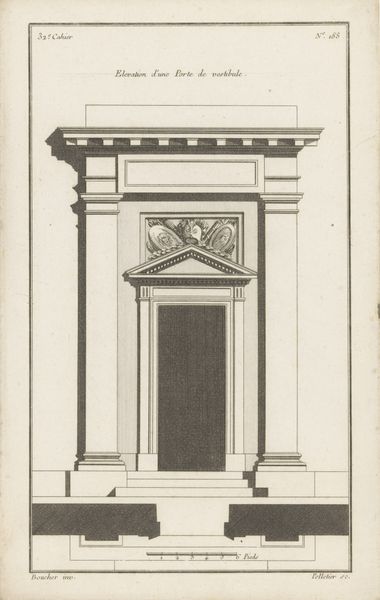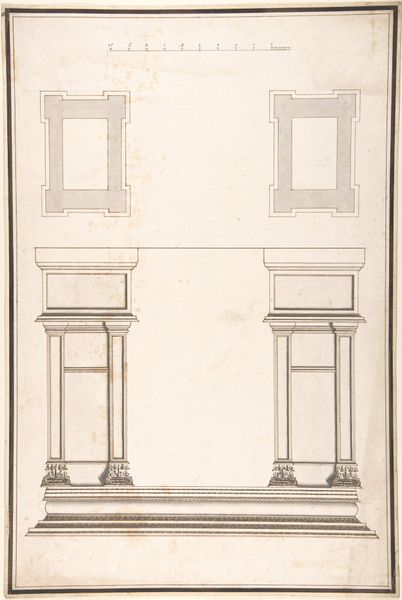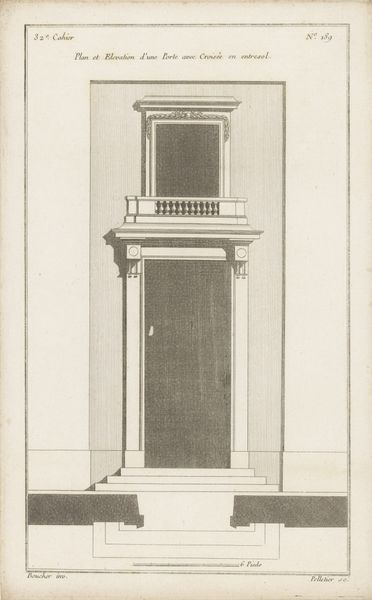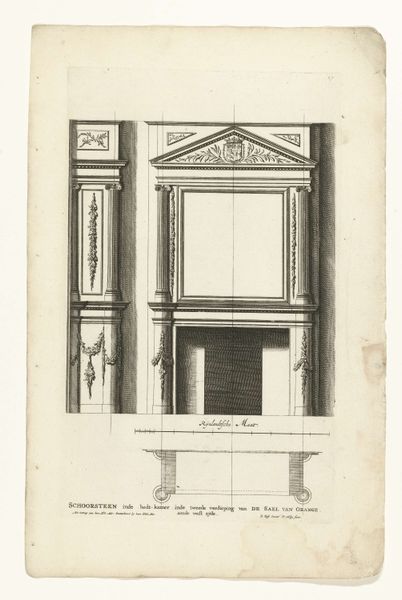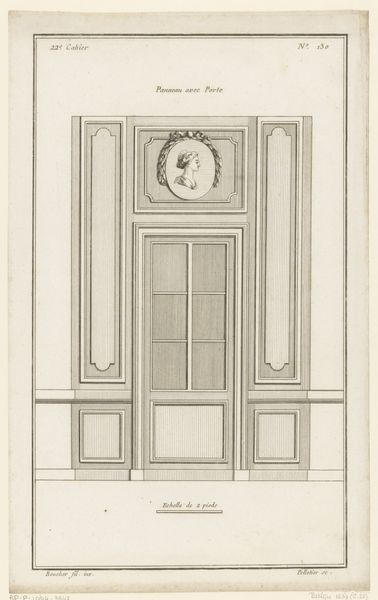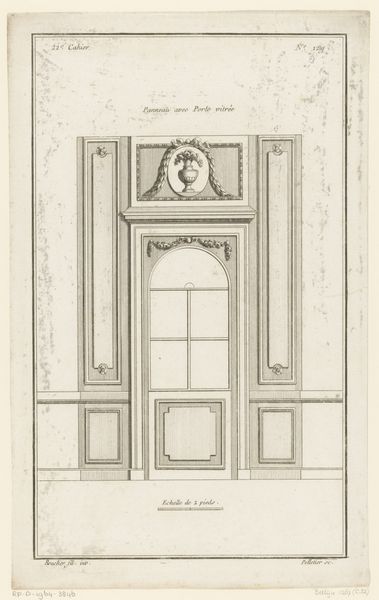
Dimensions: height 328 mm, width 205 mm
Copyright: Rijks Museum: Open Domain
Jean Pelletier made this 'Venster met fronton' – or, window with pediment – through etching, a printmaking process involving biting lines into a metal plate with acid. Look closely, and you will notice a rigorous application of line and shading. Pelletier likely used tools like etching needles and scrapers to create the precise details and textures seen here. The linear quality of the etching emphasizes the architectural elements of the window, highlighting its symmetrical design, classical motifs, and overall sense of order and refinement. Prints like this were part of a larger culture of design dissemination. They played a key role in the building boom of the 18th century, as styles were passed around between craftsmen. This etching embodies the period's aesthetic values while also serving a practical function for architects and builders. By considering the material processes behind this etching, we gain insight into the artistic and cultural values of its time, questioning traditional boundaries between art, design, and craft.
Comments
No comments
Be the first to comment and join the conversation on the ultimate creative platform.
